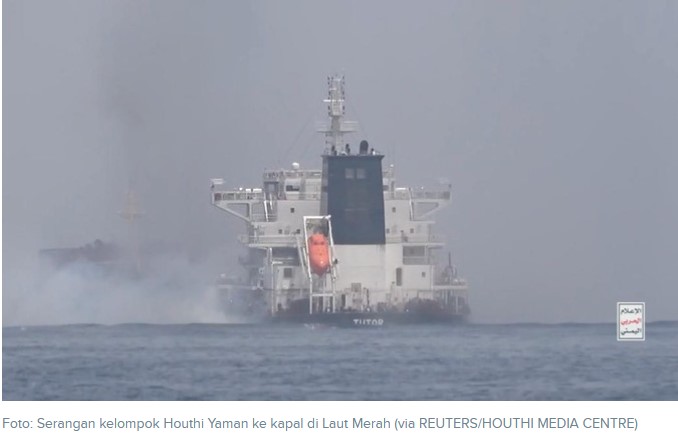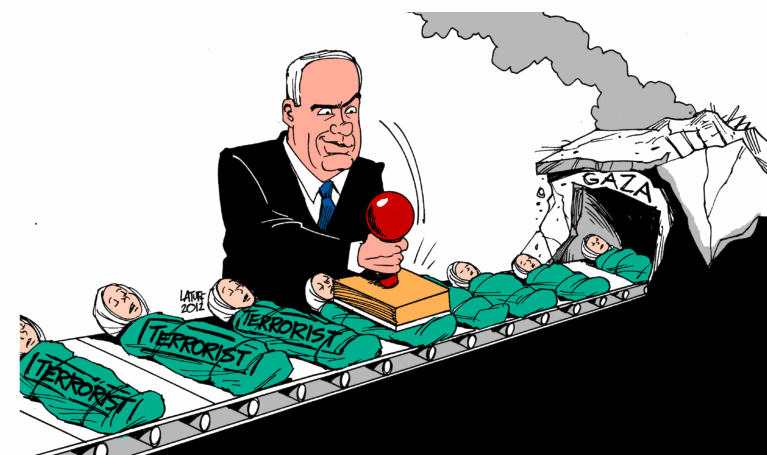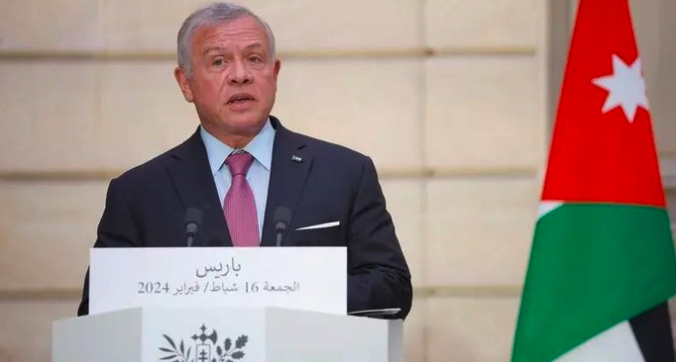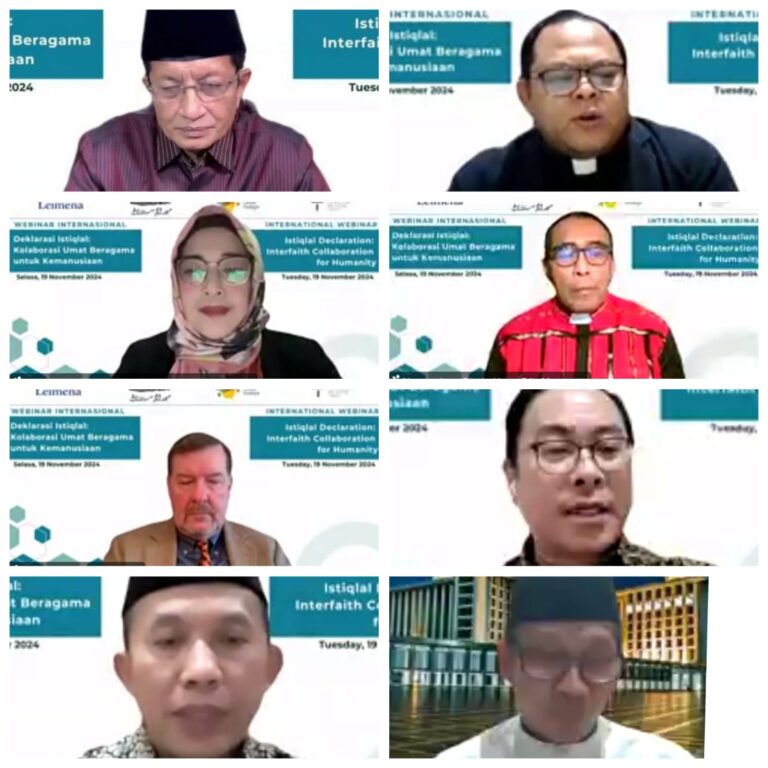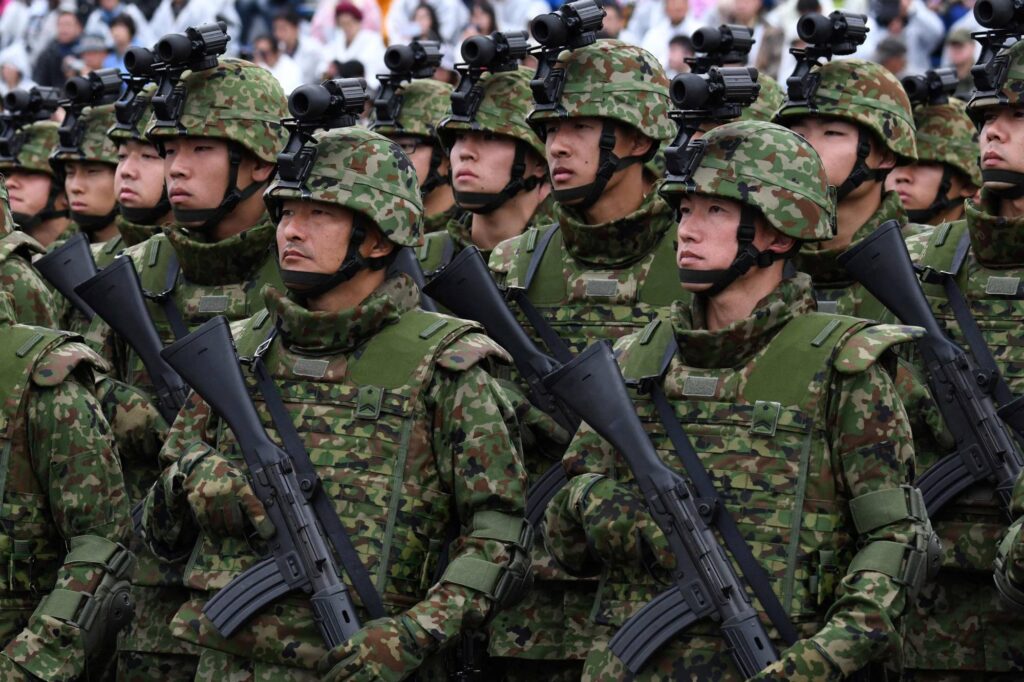
(FILES) This file photo taken on October 14, 2018 shows soldiers from the Japan Ground Self-Defense Force taking part in a military review at the Ground Self-Defence Force's Asaka training ground in Asaka, Saitama prefecture. - Japan announced on December 16, 2022 its biggest defence overhaul in decades, hiking spending, reshaping its military command and acquiring new missiles to tackle the threat from China. (Photo by Kazuhiro NOGI / AFP)
STRATEGIC ASSESSMENT. Last week, as Japan took a seat in the UN Security Council as an elected member for the next two years, Prime Minister Fumio Kishida completed a five-nation tour, meeting with G7 leaders in the UK, France, Italy, the U.S., and Canada. Security cooperation was a key focus of the trans-Atlantic tour, and the Japanese delegation took the opportunity to present and coordinate its updated national security strategy with its closest allies and partners. The visits laid the groundwork for the upcoming G7 meeting in Hiroshima, but were also part of a decade long campaign, first begun by former Prime Minister Shinzo Abe, to significantly expand Japan’s role in world affairs. Bolstering military capabilities and expanding overseas security relationships have been core tenets of this effort in recent years. Even before the official release of the security strategy, Tokyo had announced plans to develop next generation fighter aircraft, hypersonic missiles, and armed drones. These are contentious issues in Japan, where the post-war constitution, largely written by the U.S., renounced the country’s right to wage war following demilitarization after WWII. Although Japan now fields a capable and modern military, it is primarily defensive in nature and is designed to fight in concert with U.S. forces, which would be expected to provide the offensive capabilities Japan lacks in the event of a conflict.
Despite constitutional restrictions and a difficult fiscal environment, successive Japanese governments have made steady progress towards normalizing Japan’s status as a military power. Last month, PM Kishida announced plans for a massive increase in defense spending and approved an updated national security policy. Complementing the emphasis on military capacities, Japan began its two-year Security Council term with the rotating Presidency of the Council in January and plans for two ministerial events. The first, held on Thursday, focused on the “rule of law among nations” and allowed states to reaffirm key international principles in the face of challenges like the conflict in Ukraine and the unwillingness of states to address disputes through bodies like the International Court of Justice. As the week began, Prime Minister Kishida vowed that as a non-permanent member of the Council, Japan “will play the role of advancing reform to restore the functions of the United Nations.”
The updated defense plan describes Tokyo’s overarching priorities and a threat environment dominated by China and North Korea, though the language stops short of explicitly labeling China as a threat. This reflects the complex relationship between the two countries that have an unresolved territorial dispute over the Senkaku/Diaoyu islands but are forced to cooperate on other issues due to their geographic proximity. Nonetheless, China’s military buildup and its growing assertiveness in the Taiwan Strait are clearly identified as driving factors behind Tokyo’s new policy. Last summer, in response to growing cross-strait tensions, which resulted in a volley of missiles landing inside Japan’s exclusive economic zone, Japanese officials broke decades of tradition when they declared Japan would join the U.S. in defending Taiwan if attacked. Reaffirming this statement, the Japanese military announced plans to reinforce garrisons on its southernmost islands, one of which is just 70 miles from Taiwan. In a coordinated move leading up to the Biden-Kishida meeting, the U.S. confirmed it would restructure several Marine Corps units stationed on the Japanese island of Okinawa to better prepare the force to conduct expeditionary operations in support of a Taiwan Strait Crisis. These kinds of concrete steps highlight both countries’ commitment to the alliance and a willingness to adapt to an evolving threat environment.
The new policy, which consists of three separate documents, also outlines defense acquisition and investment priorities, clarifying what kinds of hardware and capabilities Tokyo will pursue to secure its national interests in the future. The planned increase in defense spending from its previous benchmark of one percent of GDP to roughly two percent by 2027 will enable many policy changes envisioned in the new strategy. Furthermore, PM Kishida has boldly acknowledged that the spending hikes would have to be enabled by tax increases. Although the next general election won’t occur until 2025, this represents a political risk for PM Kishida, who has been plagued by low approval ratings and a series of scandals. Economic stagnation in Japan has been a mounting concern and may undercut the most ambitious aspects of the new strategy.
The updated policy has been a long time coming, as Japan’s first such strategy was announced nearly a decade ago in 2013. As such, the December announcement contained few surprises for Tokyo’s allies and rivals. The published strategy confirmed Japan’s intent to develop counterstrike capabilities, allowing it to target enemy airfields and ballistic missile launch sites using surface-to-surface missiles, like the U.S.- made Tomahawk. Long-range strike capabilities will enable Japan to strike targets before launch rather than intercept them mid-flight, resulting in a more proactive defensive posture and reducing reliance on air defense. Ahead of the Biden-Kishida meeting, U.S. officials confirmed that American security guarantees will now apply to Japanese satellites. This indicates Japan’s commitment to developing the expensive satellite infrastructure needed to support its counterstrike capability. Beijing and Pyongyang will see this as an escalatory step. However, Kishida’s government maintains that the new policy is defensive in nature and intended to deter future aggression rather than provoke it.
Events over the past year dramatically changed the global security landscape. The realization of lessons learned during the Covid-19 pandemic, international reactions to Russia’s full-scale invasion of Ukraine, and growing concerns over Chinese intentions toward Taiwan have altered and accelerated the pace of change in many national defense policies. Recent flashpoints have even caused a shift in popular attitudes on defense amongst Japanese citizens, many of whom were previously indifferent or opposed to expanding the military’s capabilities. A poll conducted last spring found that nearly 65 percent of respondents supported Japan acquiring its own counterstrike capability. Japanese leaders, who have quietly prioritized reducing dependence on U.S. security guarantees since the Trump years, were likely relieved to see such a change in popular opinion. Although Japan’s slow march towards normalizing its status as a military power has been underway for many years, the recent announcements provide both allies and adversaries with a clearer picture of Japan’s intent in the future (TSC).



